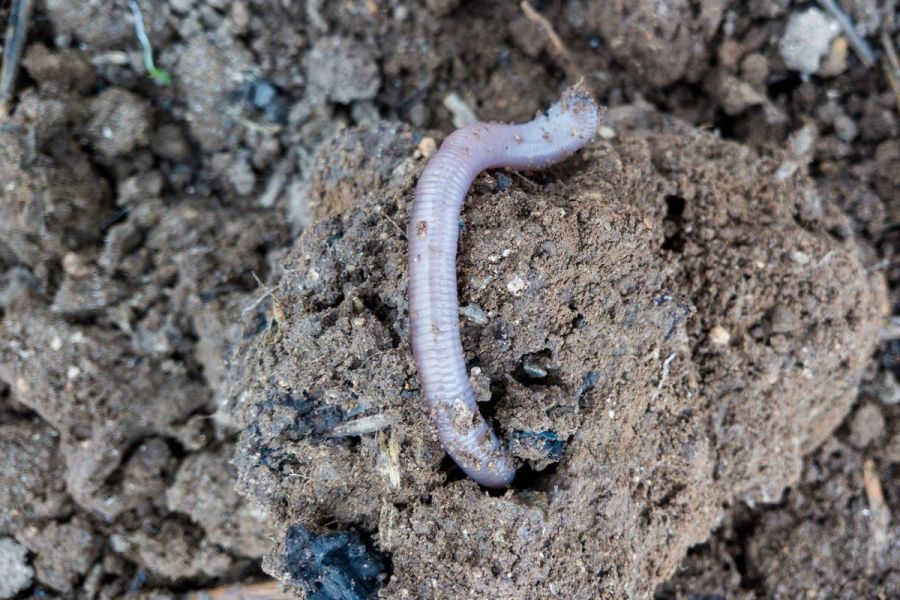Two years on from our last visit, CPM catches up with Overbury Enterprises’ Jake Freestone to find out about his latest endeavours to ‘supercharge’ soils.
“It’s all about establishing crops so they can grow away and get to a position where they can cope with whatever the weather throws at them.”
By Charlotte Cunningham
Long-standing readers of CPM will be familiar with seeing Jake Freestone across the pages of the magazine…
A true innovator in the world of regenerative farming, Jake is perhaps best known for his passion for soil biology which he applies to the mixed soil types at Overbury Enterprises via his role as farm manager.
“Overbury Enterprises is a mixed farm made up of three main soil types: Cotswold Brash, sand over gravel, and Hanslope clays. The farm in total is about 1600ha and has been in the same family since 1723.”
The arable enterprise makes up one of the business’ divisions and is set over 850ha, with an additional 200ha combined on a neighbouring farm on a contract farming agreement.
Cropping wise, the farm grows Group 1, 2 and 4 wheats, winter and spring barley, oilseed rape, winter beans for seed and some linseed. “We also let out a small acreage every year for vegetable production and grow broccoli and beetroot,” says Jake.
The rotation also comprises grass, GS4 and AB15 area, as well as SAM3 herbal leys under the new SFI scheme. “With the SAM3 grassland, we’ve been working in partnership with a local dairy farmer to produce silage for them with a view to grazing sheep on the aftermath of that.”
When it comes to the farm’s ethos, while Jake may be keen to experiment with new innovations and technologies, his farming philosophies very much stay the same year-on-year. “We’re all about regenerative agriculture – integrating our livestock into our arable fields as much as we can and trying to focus on improving soil health.
“We’re doing that through direct drilling, cover crops wherever we can, some clover understory and living mulches and building organic matter. Much of this focus around soil health is linked to the target of reducing our artificial inputs – both in terms of pesticides and fertilisers.”
But this is a long-term game, says Jake, which is all building towards protecting the farm in the future. “We’re getting a lot of variability at the moment, but that variability is very inconsistent. If we look at this year, for example, springs up until now have been very dry and we’ve seen the total opposite this year.
“A lot of what we’re doing now is about risk management – keeping fields covered is definitely part of our philosophy. If we’re in a wet spring, we have photosynthesis happening, plants using water, and roots being pushed down in the soil. So even if we can’t get on the field to plant, the biological function is constantly going. When it’s dry, cover crops help to shade and keep a little bit more moisture in the soil.”
Despite best efforts, Jake believes what he’s doing now still isn’t fast enough to cope with the pace of change. “I was a bit despondent in the winter when I looked at some of our fields and saw how wet they were as I felt we should have had better water infiltration. But even those fields, structurally there’s nothing wrong with them – they just physically couldn’t take that amount of water. That said, I think even if we were in a cultivated system, we wouldn’t have fared any better.
“We’re on the right track, but I worry our speed of change isn’t fast enough and I know that will freak out an awful lot of farmers because many don’t have their heads around the need for change at the moment. We’ve been doing this for 10 years and we’re not going fast enough. I guess the golden question is: how can you super charge soil health and resilience? It’s all about the soils – if you can get that right, everything else will fall into place.”
Building on this, to foster both health and resilience, crops in the ground must be well managed from day one to achieve that onward health, believes Jake. “It’s all about establishing them in a way which means they can grow away and get to a position where they can cope with whatever the weather is going to throw at them.”
As far as what that means practically, as well as being sown into good soils, a robust rooting system which allows crops to mine nutrients and water – and adds structure – is key, he believes. To aid this root development, Jake has been trialling a biostimulant seed treatment – Newton – from Interagro this season.
“Stimulating plants to thrive from day one is crucial for addressing the challenges posed by climate change, ensuring food security and promoting sustainable agriculture,” says Stuart Sutherland, technical manager at Interagro. “Optimising plant health from day one – by boosting seeds rather than treating plants – is key to building resilience in crops and agricultural systems.
“During the past five years, UK farmers have experienced more frequent and severe weather events, such as droughts, heatwaves, floods and storms, challenging plant health at key points in the growing cycle. Variability in weather patterns has become more common, making it difficult to predict optimal planting times and manage crops effectively.”
All of these factors add pressure on yields and profitability, he continues. “While they may not directly impact climate resilience, biostimulants applied to the seed are becoming increasingly valuable components of a broader strategy for building stronger, healthier more resilient plants better able to cope through the entire growing cycle.”
So what exactly is Newton and how does it work? Based on plant-sourced signalling peptides, Newton is a natural eco-friendly alternative to chemical seed treatment which stimulates plants to thrive naturally, explains Stuart.
In the field, this stimulation results in quicker germination, leading to faster, more consistent emergence, as well as more vigorous early growth. It also helps crops enhance their natural resilience by signalling plant defence systems early in the life of the plant and by putting down better root systems, he adds.
“In fact, it’s the extraordinary rooting benefits of Newton what really helps set it apart from other biological seed treatments, and fosters improved soil health,” continues Stuart. “By stimulating an expansive root system Newton improves the nutrient use efficiency of plants and really helps in times of drought and provide better frost heave resistance. This we have seen in trials and heard from farmers.
“In terms of the benefits this brings at the business end of the season – harvest – Newton has been proven in trials to increase yields by up to 10%. In seasons like the one we’re in, where there has been limited opportunities to support plant health during the season, supporting seed health is the best time in the growing cycle to protect yield potential and make every seed count.”
But how has it fared so far for Jake? “We’ve tested Newton in split field trials this year and emergence was a little bit quicker compared with untreated. The Newton-treated plants also had bigger roots with more biological activity in terms of how the soil was sticking to the root,” he explains. “In November/December time this difference was very evident. We’ll take them to yield and see then if there are any differences in overall production with the Newton.”
While the trial plots look fairly similar in their growth habits at present, Jake believes it’ll be the marginal cases which actually make for the biggest overall benefits. “In marginal scenarios, the differences in better rooting, brought on by Newton, might make all the difference in a crop surviving or not.”
Newton isn’t Jake’s first look at biological solutions – in fact, he’s been using liquid seed treatments and biological brews for the past four years. “We also haven’t been using fungicidal seed dressings for about five years – other than in some seed crops we buy in,” he says.
“We treat with manganese and zinc as a seed dressing and that’s about it. I haven’t had a year yet where we’ve decided to go back on this decision. This is all because we want to create a fungal environment in the soil – we don’t want to be putting fungicides in the place where we want to be getting fungi and the plants to talk to each other. If I knew then what I know now, we’d probably have done this from the start.”
Biostimulants are also used throughout the season and carbon sources go in with all fertiliser applications to ‘even out the impact’ on the soil life from all of the nitrogen, says Jake.
“But above all else, having something to start crops off well is really important to help them get up and away. This is where Newton fits in well and works alongside our ethos of managing our plants from day one.
“The plan is to use Newton again this coming season across a bigger trial area and analyse its full potential in more detail. Hopefully we’ll have a more ‘normal’ year – whatever that is – which will help us to get some good quality data,” he jests.
In terms of other plans for the future, both short and long term, Jake says remaining farming and profitable is the main thing. “We’re actually taking delivery in July of a compost windrow turner, which is partially funded through the FiPL (Farming in Protected Landscape) scheme, so we’re going to ramp up our compost manufacturing capabilities – again, to replace nutrition via organic sources.
“The aim is that this will help us to further reduce our reliance on bought-in fertiliser and in turn, lower our carbon footprint. At the moment our nitrogen inputs contribute to 52% of our farm carbon footprint and we want to work on this.
“In 10 years’ time, I’d like to see our organic matter up by another percent – that would be a huge achievement. I also have the ambition that we’ll be able to sell and be rewarded for regeneratively farmed produce. I think there’s a huge opportunity to do this but will rely on us pooling on the tools available to help us farm as efficiently as we can.”
This article was taken from the latest issue of CPM. Read the article in full here.
For more articles like this, subscribe here.
Sign up for Crop Production Magazine’s FREE e-newsletter here.




